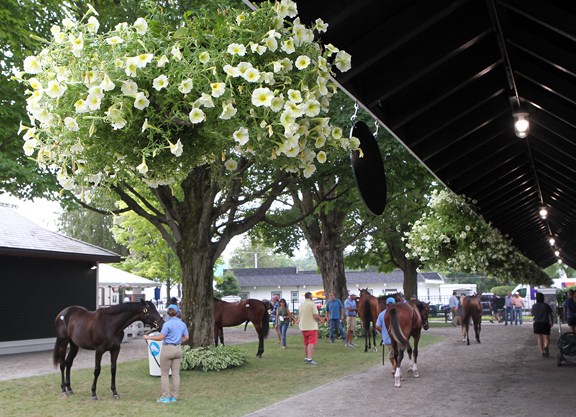By Robert D. Fierro
There are several companies or individuals who provide services that, in the end, use the data gleaned from an ultrasound to project in one way or another potential racing success. We provide data obtained when a Thoroughbred's heart is scanned with an ultrasound computer and measurements are taken of its body mass to determine an “ejection fraction.”
The definition of “success” often depends upon the criteria applied to that data. One definition of success is to project the potential for that horse to race successfully up to or beyond a certain distance. (Most of these providers do not offer medical data one would get from a veterinary examination).
Your correspondent and partners provide such a service on a stand-alone basis or as part of an overall biomechanical profile which takes into consideration the size, structure and likely efficiency of the horse in question. In either case the primary finding of an ultrasound is based on distance potential.
Since we like to keep things simple, we use the following analogy: What kind of a vehicle do you have and is the engine capable of providing the energy to get that vehicle's job done? For example, you may have a Ford Explorer on your hands but it has a Toyota Corolla engine–not going to work because that engine will be struggling for that vehicle's functionality, which is to get into gear and build momentum with sustained power over a bit of ground. Or, you might have a Maserati in the barn, but the engine belongs in an Explorer–your vehicle needs to get away fast and stay fast early, but a heavy engine designed to gather momentum is not going to be efficient. We could give many more examples, but you get the drift. (You might be surprised how many women get this quicker than some men).
In any case, while many of these providers project distance capabilities, some might also employ the technology along with other factors to project quality. This is a much more difficult task because quality is a fleeting thing in so many ways.
For the purposes of this essay we wanted to see whether ejection fraction could project racing quality in a readily identifiable group of yearlings, and we found that group in the Saratoga Select sales from 2012 through 2017. At these sales we scanned well over 600 yearlings. There were nearly 100 stakes winners in that group (based on racing through July 15 of this year).
Even though we also biomechanically analyzed every one of those yearlings, we tasked ourselves to ignore those findings and to just concentrate on what percentage of those stakes winners had returned Cardio Scores that were Above Average, Average or Below Average relative to the criteria we have established in our database on more than 20,000 Cardio Scores.
Just to make things clear: the Average score (orange on the charts below), is not only where the majority of scores fall but also in all our previous studies has been the cut-off between runners who can win at a mile or further and those which have problems achieving those distances. Above Average scores (blue on the charts) logically implicate greater distance capabilities while Below Average scores (in grey) are risky when it comes to distance.
We found a great deal of interesting data that we could have brought to the table in a bunch of charts, but the basic findings can be summed up in just two charts:
This one shows the distribution by Above, Below and Average groups among all yearlings analyzed.
This one shows the quality of the stakes winners–the Above and Average are a much larger percentage of graded stakes winners while the Below are almost not there. As an aside, six furlongs was the distance of the Grade I win of the Below Average group.
There's an enormous amount of other data we could supply and share, but we thought a conversation could be started with what has been presented here.
After all, we would never argue with the fact that a horse with a great deal of innate courage is one that we'd like to see battling for the lead at the sixteenth pole. But we sure as heck would like to know that in the next 110 yards it probably would not run out of gas.
Bob Fierro is a partner with Jay Kilgore and Frank Mitchell in DataTrack International, biomechanical consultants and developers of BreezeFigs. He can be reached at [email protected].
Not a subscriber? Click here to sign up for the daily PDF or alerts.








